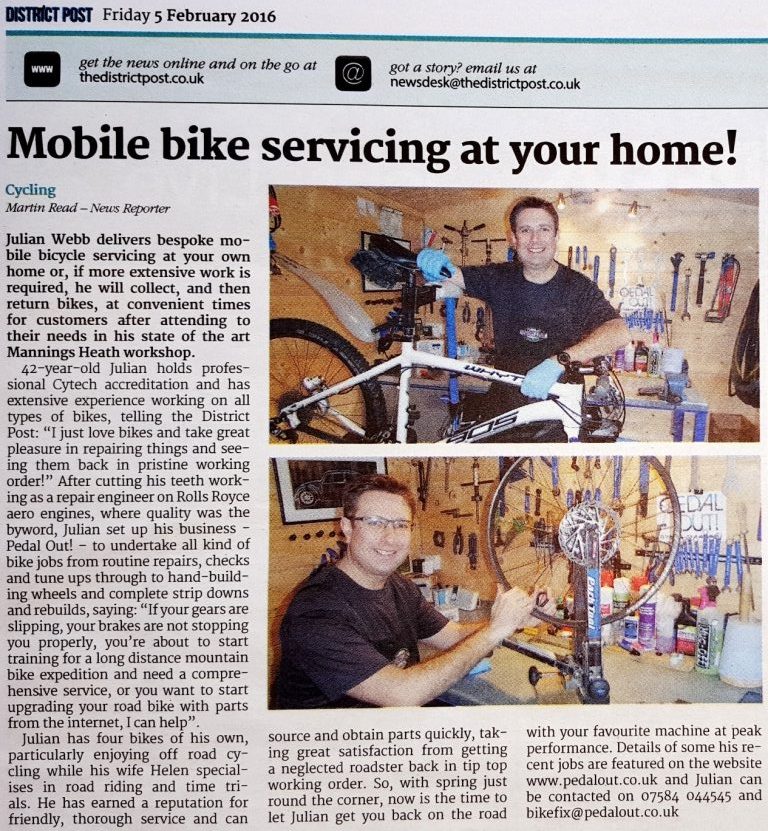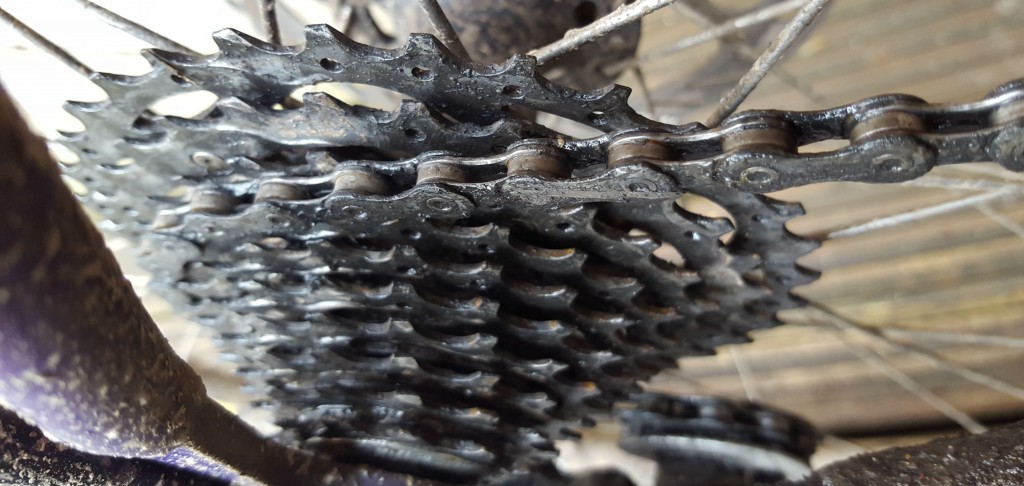What the press says about Pedal Out!

Why I sometimes need to replace chains and sprockets.
Every bike chain has several hundred parts working together to turn a back wheel, and each chain must be capable of securely shifting from chainring to chainring when the rider needs to change gear. Chains have to work reliably in all kinds of harsh environments too, such as soaking gritty roads and muddy forest trails.

Unfortunately dirt, spray, fine grit and tree mulch along with the oil on the chain creates a mixture that makes a good grinding paste; especially when it gets driven into every part of a chain and then gets mixed with fine metal particles from the chainrings and sprockets. To make it worse, just adding more lube to the mucky paste helps the paste spread itself further into the chain. If unchecked, eventually the parts which hold the chain together and the insides of the rollers which fit over these parts become worn. This effectively increases the gaps between the links. Although the chain is not stretched in the sense that an elastic band might, the rollers are no longer held in the correct positions to mesh accurately with the teeth. As a result, the rollers wear more at the sprockets and chainring teeth causing accelerated damage.
At first, gear shifting becomes less precise and the rider might notice having to shift gears twice one way and then backwards once to get the next gear. With more wear, the chain starts to slip over the teeth. When the wear progresses to this stage it is dangerous because if the chain slips over the sprocket teeth when the rider pedals hard, it can cause an accident.
The good news is if a chain has not worn too much, then simply replacing it will prolong the life of the cassette and chainrings. This is the reason why I often replace chains for customers during routine servicing; it saves money in the longer term by avoiding the need to change sprockets and chainrings more often. The other good news is that replacing a chain as part of a service results in the gears working better as the slackness of worn links has been taken away.
So to prolong the life of transmission parts in between proper servicing, I recommend a good clean and lubrication of the chain and transmission every fifty to seventy five miles of wet road riding, and every hundred miles when the roads are dry. This should ensure that the mucky paste does not do too much damage before it gets removed. For mountain biking, cleaning all the transmission parts after every wet ride is best if you can.
